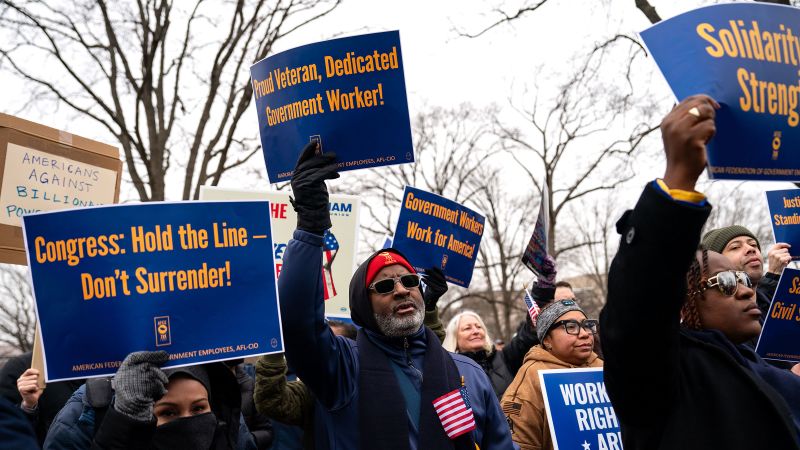A federal judge has recently issued a temporary restraining order that effectively prevents the Trump administration from implementing mass firings and significant reorganizations across various federal agencies. This action stems from a controversial executive order signed in February, which aimed to drastically reshape the federal bureaucracy in a manner that raised legal questions and concerns among public servants and government watchdog groups.
The ruling was made by Senior District Judge Susan Illston, who convened a hearing to discuss a request from federal employee unions, local government entities, and organizations that rely heavily on federal services. These groups contended that the administration’s actions were not only premature but also overstepped legal boundaries. Judge Illston’s order, which is set to last for two weeks, specifically halts the administration’s approval or execution of plans termed Agency RIF and Reorganization Plans (ARRPs). These plans included possible mass layoffs and the closure of specific agency divisions.
She also paused directives stemming from the Department of Government Efficiency (DOGE), which have aimed to execute cuts in programs and staffing levels in alignment with Trump’s executive order. In her ruling, Judge Illston underscored the necessity of cooperation with Congress when the Executive Branch considers large-scale changes to government structures, indicating that such authority isn’t unilateral.
The role of DOGE, which is reportedly linked to prominent business figures, such as Elon Musk, came under scrutiny during the proceedings. Union representatives alleged that the DOGE initiative was operating “largely in secret,” thereby circumventing necessary transparency and failing to provide essential information to stakeholders, which includes labor representatives and, crucially, Congress. Notably, the Office of Management and Budget (OMB) and the Office of Personnel Management (OPM) have played pivotal roles in directing agencies on how to submit their respective reduction and reorganization plans.
This ruling represents a substantial legal setback for both President Trump and DOGE, who have been actively pursuing an aggressive strategy to reduce the federal workforce and streamline governmental operations. The envisioned reductions would have potentially resulted in the termination of tens of thousands of federal employees and the closure of numerous agency offices without adequate consideration of how such actions might impede the agencies’ statutory responsibilities.
The Justice Department has suggested a desire to appeal this decision swiftly, hinting that this case may escalate even to the Supreme Court. However, Judge Illston rejected a procedural strategy proposed by a DOJ attorney that could facilitate an expedited appeal, further underscoring her judicial authority over the matter.
In her extensive 42-page opinion, Judge Illston strongly emphasized that no existing laws empower DOGE, OMB, or OPM to order other federal agencies to undergo large-scale layoffs, restructuring, or eliminations unilaterally. She expressed concern regarding the legality of the administration’s directives, asserting the necessity of a temporary injunction against further advancement of the plans until their legal standing could be fully assessed.
This order encompasses significant reductions in staffing and operations across multiple substantive agencies, including those tied to Agriculture, Energy, Labor, Health and Human Services, and the Environmental Protection Agency, among others. As part of her ruling, the administration has been ordered to deliver its reduction plans by Tuesday and provide updates related to the execution of her mandate.
Responding to the court’s decision, the challengers expressed appreciation for the ruling intended to temporally halt detrimental actions still pending litigation. It signals a broader commitment from various organizations to hold the administration accountable legally. Skye Perryman, representing the challengers through Democracy Forward, highlighted this ruling as a recognition of the ongoing defense of the rule of law.
Amidst these developments, CDC’s networks have reached out to the White House for remarks on the court’s ruling; however, an official response remains pending. The legal discourse surrounding the executive order reveals its complexity and the procedural challenges that lie ahead, demonstrating the continual interplay between the judiciary and executive branches in matters of significant public governance.
As these events unfold, the next steps in this legal battle will likely set important precedents regarding federal authority and employee rights, echoing the ongoing tensions within U.S. political and administrative frameworks. The outcome of this case and whether it escalates to higher courts could influence the future dynamics of federal governance and employee relations in a profound way.



